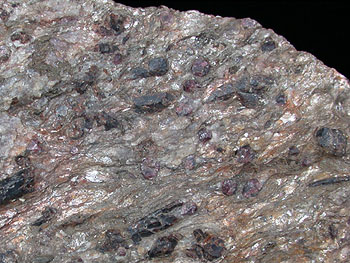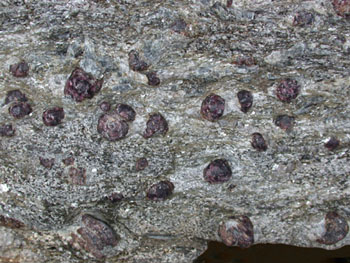
|
| Schists are the next higher grade of metamorphic rock from slates. (Actually, I am skipping phyllites, which should come next, in the interest of simplicity.) Schists have mineral crystals large enough to be identified and usually have wavy, undulating foliation textures caused by micas and other platy minerals. Distinctively metamorphic minerals such as garnet, staurolite, kyanite, and sillimanite occur in schists, depending on the metamorphic grade and starting composition of the parent rock. |
|
Click here for a super close-up of this sample. |
 |
|
The orangish/reddish color of the muscovite is due to iron staining. |
 |
|
The garnets are bright red-orange. |
 |
|
Click here for a close-up of the kyanite. Click here for another. |
 |
|
|
 |
|
|
 |
Return to GeoImage Home Page
![]()
|
|
|